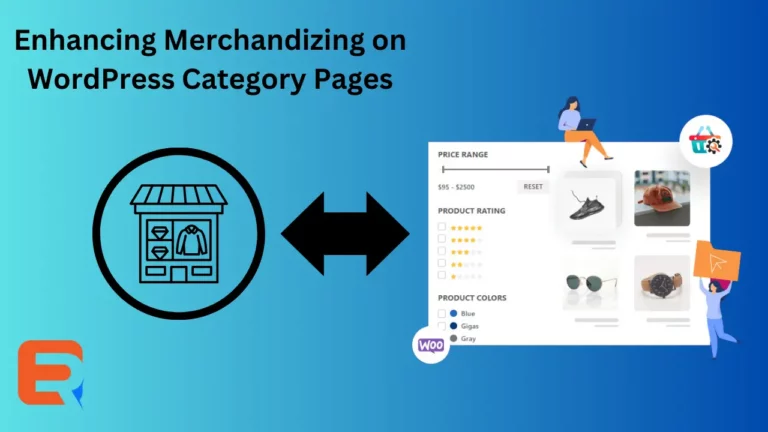The value of category pages can be understood by the fact that from the home page, they redirect visitors to product pages such that making a purchase simplifies for them. Similarly, with numerous options available on category pages, the odds of a consumer coming across something that he seeks to buy increases.
When category pages are right, sales will be higher for any eCommerce business. Merchandising strategies on category pages also have to be right. Just as an instance, if your bestseller is the first thing that a consumer sees on a category page, he is likely to be prompt in his purchase decision. So, you do not want your best products to be on the second page or beyond.
A host of other aspects are associated with merchandising the category pages, which we will discuss in this article.
-
Implementation of Effective Merchandising Strategies
Just as subcategory pages are important, so are category pages. Many of your visitors will prefer to have a category’s high-level view before they narrow down their search. When a consumer does not have an exact picture of the product that he intends to buy, he is likely to spend some time over category pages to see what’s available.
Category pages should be so made that they encourage browsing. This is a luxury difficult to enjoy at a brick-and-mortar store. This is a potent strategy to reduce Landing pages because some customers will be reluctant to look in each of the subcategories to figure out what they intend to buy.
1.The ability to filter results adds to customer delight
The overload of alternatives on category pages is likely to overwhelm the consumer who would be interested in only a few of the products that he sees. But when you use filters, consumers are empowered to make the results more precise still, until they become more manageable.
It may be possible that a customer comes across thousands of search results in the t-shirt category. Finding what he seeks is going to be difficult for him under such circumstances.
However, when he filters results by, price, color, collar, etc; the search results narrow down to just a few dozen items. It makes it possible for the consumer to come across what he likes in fewer clicks.
2. Subcategories could be added multiple times as and when required
A few of the subcategories are overlapping, like boy’s pants and kid’s clothing. A new school of thought says that they should both be listed under a category such that it becomes easier for an end consumer to find what he seeks. It is okay if different subcategories list common products. It only gives the end consumer additional ways to buy what he seeks.
When creating subcategories, an important aspect to be kept in mind is that the space should not appear to be cluttered. One of the preferable ways of deciding upon the matter is to conduct usability testing on it. This lets you be sure about how your customers react to the different alternatives. You can then settle for the ones that deliver the most positive responses.
3. The categories need to be obvious for the users
Cute and witty category names induce laughter in many cases. However, from the viewpoint of making sales, legible category names are better placed to accomplish the needful. On the other hand, a witty category name might add to the confusion.
A customer will be delighted only when he gets to what he desires over your site in a few simple clicks. Beyond that, he may choose to take your competitors’ services.
Specifications of your product also need to be clearly defined. Cloudy sunshine may seem like a nice colour for a product. But it doesn’t tell a visitor if the colour is grey, yellow, blue, or orange.
Overall, clarity in specifications and category names should not be compromised for branding the products brilliantly.
4. Keep product images consistent
Unified branding delivers the best chance for success in terms of product photography. This gives a visitor multiple ways to relate to your brand.
On the other hand, if the photographs are not found to be in adherence to any particular style, a viewer is unlikely to think much of your brand. Your brand won’t register in his mind.
Another development that takes place is that the products with the best photographs are likely to get decent sales. But, other products will be at a disadvantage.
One of the best tips that work here is to take the product photographs yourself and not have the vendor provide them for you. This way, branding moves on to the category page.
5. Landing pages should have product reviews
UX should be so designed that customers find a funnel to centre down on the products that they intend to go through and buy. It is going to be difficult to be sure about what your customers want. So, the top options on your website should be highlighted.
Star ratings and reviews inspire your customers to click on and buy. This makes the products trustworthy. The more reviews your products have, the more they are clicked.
-
Utilizing Expertrec for Seamless Merchandizing Integration
Curating the digital shopping experience delivers rich outcomes for brands. Besides sales, this induces repeat customers.
So, merchandising strategies for category pages need to be multifaceted. Product listings need to be optimized while personalized experiences also need to be implemented. Navigation should be effective while segmentation should be conducted strategically. Consumers, this way can be guided seamlessly in their journey.
Merchandising has to be innovative but globally prevailing trends need to be kept in mind. One has to keep an eye out to see what one’s competitors are doing because the market environment is competitive and dynamic.
Expertrec is your preferred eCommerce merchandiser and facilitates seamless merchandising integration. Given the significance of merchandising on category pages, our professional services become indispensable for the success of your brand.
We benefit your online mall via practical merchandising strategies that yield on-ground, measurable results and benefit your store across the short and the long term.




